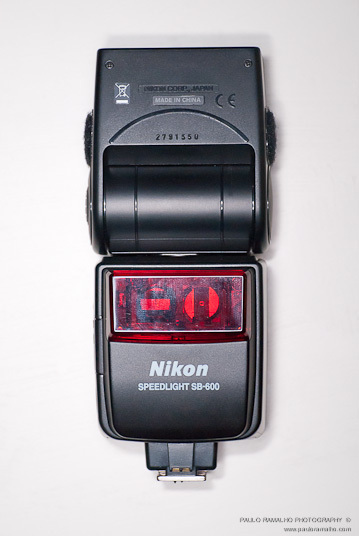Blog
Two more Nikon SB600 have arrived
December 20th, 2008
I have been using the Nikon SB 800 for some time. Today the family got bigger, two SB600s have arrived. Since I started with the SB800 on my own I started to study Nikon CLS technology more thoroughly. I realized that the CLS (Creative Lighting System) or Nikon Creative Lighting System, like all technologies, applied or not to photography, has its pros and cons. However, if you average the advantages and disadvantages, I still go for its benefits.
Using wireless flashes with TTL control is simply amazing. For purists it can be a “sin” not to be around handheld photometers, adjusting the power of the flash according to the number: f of the lens used among other things that in “certain circumstances” makes us lose a lot of time.
When it comes to photographing events, for example, the photographer does not have enough time to think about whether or not the flash is set to that aperture. It almost takes “point and shoot”. Also, if you know how to interpret a histogram, you will know if your photograph is well exposed just by looking at the JPG preview of the RAW on the camera’s LCD. This is precisely where Nikon’s fantastic system comes in. Is the photographer more “lazy”? Well, it depends on your point of view.
It is assumed that to get the most out of the CLS system and get the most out of it, you have to master the techniques of using Flash, at least the most basic ones. But this post is not intended to give advice on how to use the flash, but to comment on the use of the CLS (creative lighting system) between 3 flash units, one SB800 and two SB600.
Let’s imagine the situation. You have the task of photographing two models at sunset, in addition to natural light, a counter-light flash and two other fillings. But during your photoshoot, you also want to vary the lens aperture to test the different levels of depth of field to suit your photography best. The answer to this situation? A wireless flash system with TTL control. If the landscape shifts to product or portrait studio photography, then it is easy to do things more carefully and use the flashes in manual mode.
Let’s take a look at some of the advantages and disadvantages of using this system in my opinion:
Advantages
- The system uses TTL light metering through the lens, which measures the amount of light entering the lens to assign how much light the flash needs to fire. The photometer built into the camera sends information to the flash of the amount of light entering the lens.
- There is no need for large and heavy batteries to supply flash power. This for me is a great advantage. Using good quality, 2700 rechargeable NiMH batteries solves the problem.
- You can use (on cameras that allow it) the high sync speeds above 1/250. This is very useful in bright light or when shooting against the light.
- Ease of movement with flashes. If the flash is on a light foot, plus a light controller (snoot, window, soft-box) the set is ready for lighting.
- 100% compatible with the camera system, of course we are talking about the Nikon system, compatible with cameras of the same brand.
Disadvantages
- There is a certain “working angle” to use the wireless system. Sometimes you feel a bit limited when mounting a lighting system.
- Distance can also be a factor in preventing the flash from firing and this is inconvenient. I did experience some timing issues in some more extreme cases of distance between camera and flash.
- The flash sensor has to “see” the camera. It is necessary to point the sensor for the camera, this is done when choosing the position that the flash will be mounted.
Well, I think hourly is everything. In a future post I will explain the technical part of the system, as well as tips on how to use the Nikon CLS system outdoors and with a small study in the Strobist style. Until next time.

